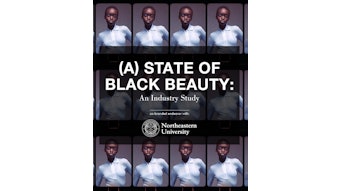
Investment bank DC Advisory has launched a review on the state of beauty M&A in 2025 and an analysis for what's next for the industry.
While the 2022 post-COVID M&A boom saw a 67% increase in global deals (compared to 2019), market levels have moderated since the pandemic. Factors apart from the pandemic have also begun impacting the consumer sector across all verticals, namely the U.S. Administration’s changing tariff policy and geopolitical environment.
Despite these changes, DC finds that the beauty category and its subcategories have remained resilient. A continued resurgence in strategic activity by major players and ongoing global transactions signal a healthy and growing category for the future of beauty worldwide.
Luc-Henry Rousselle, Managing Director of DC Advisory, says, “Beauty brands in 2025-2026 must be nimble and focus on authenticity, community, innovation and balancing growth with profitability to thrive in a dynamic M&A landscape. M&A volumes are expected to steadily recover with a particular focus on science-backed skincare and premium fragrances. For those seeking acquisition, it is critical to build a strong brand for the long-term, demonstrate scalability in attractive channels, strong unit economics and consumer loyalty. Leveraging emerging trends like the blending of beauty and wellness and focusing on efficacy and demographic shifts can also enhance appeal to acquirers navigating an increasingly competitive market”.
Where is M&A Heading: The Future of Beauty M&A Growth
United States: DC predicts that the remainder of 2025 into 2026 is expected to see positive and dynamic growth for the U.S. beauty market, as beauty remains an essential priority for shoppers. Predicted investment in the U.S. beauty market remains strong, with a steady anticipation of overseas players looking to enter the U.S. market.
United Kingdom: The U.K. market is set to grow, with high-profile M&A activity providing a strong foundation for 2026. A continued investment in social media marketing for younger consumers will sustain this growth, with recent surveys indicating 22% of social media users discover new beauty trends, and 27% have purchased beauty products from these platforms. DC also anticipates an increase in divestments. They estimate that around 80 beauty assets have been sitting in private equity and venture capital portfolios for over five years, presenting an opportunity for more transactions in the future.
 DC predicts that the remainder of 2025 into 2026 is expected to see positive and dynamic growth for the U.S. beauty market, as beauty remains an essential priority for shoppers. Monchisa at Adobe Stock
DC predicts that the remainder of 2025 into 2026 is expected to see positive and dynamic growth for the U.S. beauty market, as beauty remains an essential priority for shoppers. Monchisa at Adobe Stock
Asia: In Asia, M&A will remain strong as more investments focus on sustainability and growth. For South Korea, beauty M&A shows increased willingness to sell into the K-beauty craze, attracting strategic and financial investors to drive growth. This is also fueled by a focus on continued innovations in makeup, skin care and beauty devices that attract a large portion of Western consumers. The industry is projected to grow at a CAGR of 4.83% through 2030. India is not far behind as brands seek to increase valuation and attract investors by focusing on inclusive cosmetics, ayurveda, science-backed formulations and quick-commerce-led distribution models.
Global M&A Breakdown for 2025
 As of now, 2025 is off to a strong start for the United States, with an uptick in mergers and acquisitions from major players.Kritdanai at Adobe Stock
As of now, 2025 is off to a strong start for the United States, with an uptick in mergers and acquisitions from major players.Kritdanai at Adobe Stock
United States: DC forecasts that the U.S. beauty market will see growth surpassing that of recent years. As of now, 2025 is off to a strong start, with an uptick in mergers and acquisitions from major players. So far, the U.S. beauty M&A has seen 16 announced transactions. Q2 makes up nine of those announcements. That includes Unilever's acquisition of Dr. Squatch (a natural soap brand for men) for $1.5 billion. Other noticeable deals include e.l.f’s acquisition of Rhode for ~$1 billion, L’Oreal’s acquisition of Medik8 for a rumored $1 billion and Church & Dwight’s acquisition of Touchland’s for $880 million.
Europe: In 2024, Europe was the second most active region behind North America. This marks a departure from the last two years, where Europe held the majority of global beauty M&A. This year, European M&A makes up six of 27 transactions announced YTD (half of which come from the United Kingdom). Major transactions include Unilever’s acquisition of personal care brand Wild for approximately £100 million and Ulta Beauty’s acquisition of Space NK for more than £300 million.
Asia: Asia has seen exceptional activity in the last few years, ranking second or third highest in transaction volume globally. This year, the market is off to a slow start due to factors such as the tariff policy, but elevated transaction volume and value are projected. South Korea, which has seen exponential M&A activity due to the rise and popularity of K-beauty, saw 18 deals in personal care assets worth 2.3 trillion won ($1.6 billion). This includes K-beauty cosmetics brand Skinidea by Morgan Stanley Private Equity for 100 billion won ($75 million). India also remains competitive, with a projected 10% growth for their $28 billion market over the next three years. For 2024 and H1 2025, 18 announced transactions took place, 11 of which involved private equity. Landmark transactions include Hindustan Unilever’s majority stake acquisition of Minimalist, a science-backed beauty and skin care brand, for Rs 2,955 crore ($350 million).
Who is Buying: Strategic Investors and Private Equity
 Strategic players are looking to fill gaps in their portfolios with brands that deliver strong online presence, innovation and growth.OlekStock at Adobe Stock
Strategic players are looking to fill gaps in their portfolios with brands that deliver strong online presence, innovation and growth.OlekStock at Adobe Stock
Across the United States and Europe, strategic investors were involved in most of the acquisition announcements YTD as they look to expand regional coverage and global expertise. DC anticipates more corporate divestitures as large players evaluate their portfolios, creating an opportunity for specialized investors to buy. In Asia, strategic players are looking to fill gaps in their portfolios with brands that deliver strong online presence, innovation and growth.
While private equity is also a key player, it remains selective given the uncertainty of the broader economy. Still, the market has seen activity such as General Atlantic’s investment in OSEA Malibu, a U.S. clean skin care brand, and TSG Consumer Partners’ acquisition of fragrance brand Phlur. PE is active in South Korea as well, with beauty conglomerate Goodai Global’s acquisition of Seorin for $432 million and the pursuit of several brands with global presence and large followings (such as Tirtir, Craver and Skinfood).
What Are Investors Buying: Beauty and Personal Care Subsectors
Skin care, fragrance and hair care are noticeable subcategories within the beauty, with skin care remaining the most active subsector across domestic and global markets.
 M&A data highlights the growing demand for scientifically developed skin care and a shift to establish a larger global presence.Elina at Adobe Stock
M&A data highlights the growing demand for scientifically developed skin care and a shift to establish a larger global presence.Elina at Adobe Stock
Skin care: 2025 YTD saw 10 out of the 27 transactions related to skin care globally. A high demand for science-based skin care is shaping this activity as investors seek data-driven, evidence-based products that are inclusive and diverse. A good example of skin care-related M&A includes L’Oreal’s acquisition of K-beauty Gowoonsesang Cosmetics Co. (which encompasses skin care brand Dr. G) and U.K. skin care brand Medik8. Both acquisitions represent the growing demand for scientifically developed skin care and a shift to establish a larger global presence.
Fragrance: Fragrance ranks second behind skin care, with four transactions announced YTD. The market is seeing a boom in luxury and niche fragrances. Factors include a broadening demographic appeal (Gen Z represents 80% of fragrance users), new consumption habits (buyers are purchasing multiple fragrances rather than sticking to one scent) and a rise in fragrance collectors. Strategic players are set to capitalize on these evolving trends. Unilever Ventures invested in indie fragrance label The 7 Virtues. Lea Nature acquired a 60% stake in Berdoues Parfums et Cosmetiques, and Kering acquired Creed from Blackroot for $3.8 billion.
 DC predicts the hair care subcategory will see significant growth. 40% of hair care M&A took place in the US. Asia is not far behind, taking up 30% of hair care transactions. ЮРИЙ ПОЗДНИКОВ at Adobe Stock
DC predicts the hair care subcategory will see significant growth. 40% of hair care M&A took place in the US. Asia is not far behind, taking up 30% of hair care transactions. ЮРИЙ ПОЗДНИКОВ at Adobe Stock
Hair Care: Hair care remains hot, with four transactions announced YTD (the same as fragrance). DC predicts the hair care subcategory will see significant growth. 40% of hair care M&A took place in the US. Asia is not far behind, taking up 30% of hair care transactions. Global transactions include L’Oreal’s acquisition of U.S. brand ColorWow, Dabur’s acquisition of FMCG and Ayurvedi manufacturers in India and U.S. private equity firm Blackstone’s pursuit of South Korea’s Juno Hair.
Get the full report here.










